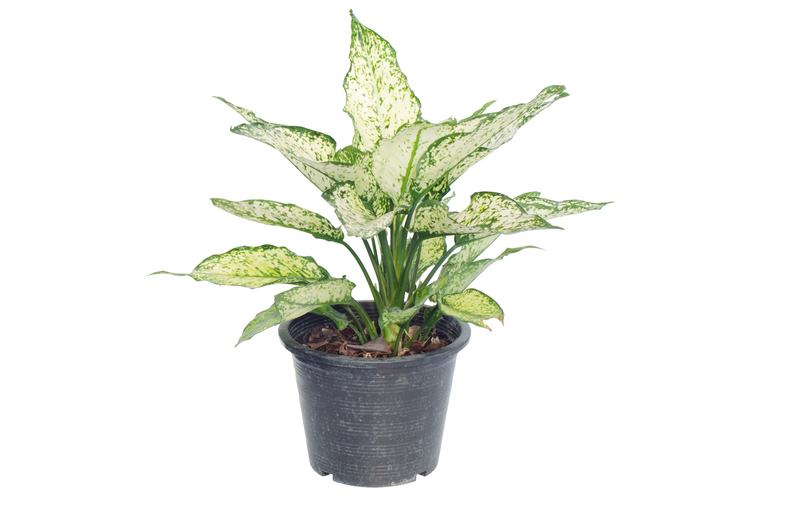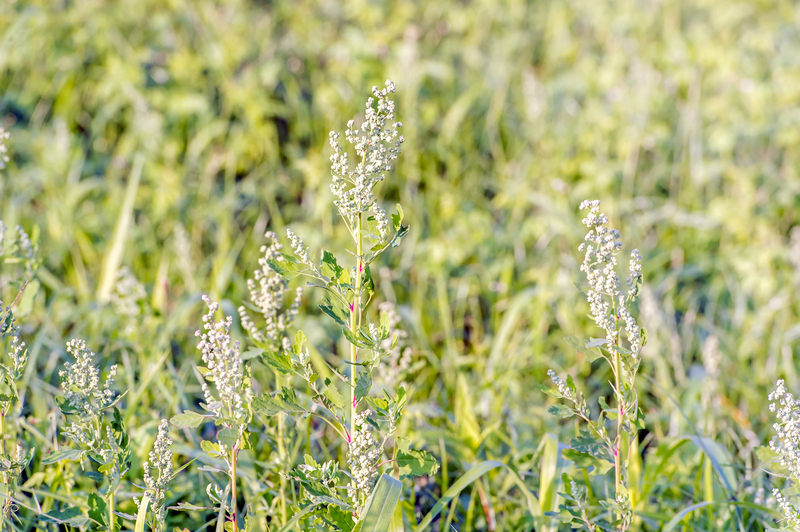Gardening Tips to Delight Your Little Ones
Posted on 31/08/2025
Gardening Tips to Delight Your Little Ones
Gardening is a magical experience, especially for children. Creating lasting memories outdoors, connecting with nature, and delicately nurturing new life can captivate a child's imagination and foster lifelong skills. In this comprehensive guide, we'll share proven gardening tips to delight your little ones, ensuring every gardening session is educational, fun, and unforgettable.

Why Gardening Is Great for Children
Children are naturally curious and love exploring the world around them. Introducing your kids to gardening offers a multitude of benefits, including:
- Developing fine motor skills by digging, planting, and watering.
- Encouraging healthy eating habits when they grow their own fruits and vegetables.
- Fostering curiosity and responsibility as they care for living plants.
- Providing a calming, screen-free environment that promotes mindfulness.
- Helping kids learn about science and nature in a hands-on way.
By following practical, age-appropriate gardening ideas for children, you can spark your child's enthusiasm and inspire a love for the outdoors that lasts a lifetime.
Getting Started: Preparing for a Child-Friendly Garden
Choose the Right Location
Selecting the perfect spot for gardening with kids is vital. The area should be safe, visible, and easily accessible. Look for:
- Sunlight: Most seeds and plants need at least 6 hours of sun per day.
- Visibility: A spot near the kitchen window or patio allows for easy supervision.
- Safety: Keep away from traffic, thorny plants, and other hazards.
Equip Your Little Gardeners
Provide child-sized gardening tools to ensure comfort and safety:
- Small trowels and spades with easy-grip handles
- Lightweight watering cans
- Gardening gloves to protect tiny hands
- Hats and sunscreen for sun protection
Encourage Creativity
Let your little ones add their personal flair! They could decorate plant pots with paint, build fairy gardens, or create garden markers using popsicle sticks and vibrant colors. Imagination and gardening go hand in hand.
Kid-Friendly Gardening Ideas
1. Grow Fast-Sprouting Seeds
Children love seeing quick results. For instant gratification and continued interest, try planting:
- Radishes (ready in 3-4 weeks)
- Sunflowers
- Nasturtiums (edible flowers!)
- Beans and peas
- Leafy greens like lettuce and spinach
Watching seeds sprout and grow teaches patience while providing tangible accomplishments.
2. Plant Colorful, Edible Gardens
Turn your garden into a feast for the eyes and the taste buds! Plant brightly colored vegetables and fruits such as:
- Cherry tomatoes
- Strawberries
- Rainbow carrots
- Bell peppers
- Purple beans
Kids are more likely to try (and enjoy!) fruits and veggies they've helped grow themselves.
3. Create Themed Gardens
Gardening for little ones becomes even more exciting when it's themed:
- Pizza garden: Grow tomatoes, basil, and oregano.
- Butterfly haven: Plant milkweed, zinnias, and other pollinator-friendly species.
- Fairy garden: Incorporate small houses, pebbles, and tiny figurines among the plants.
Themed gardens add a storybook element that fosters play and learning.
4. Provide Sensory Experiences
Gardening is a full-sensory activity. Choose plants that engage all the senses:
- Smell: Lavender, mint, lemon balm
- Touch: Lamb's ear, snapdragons
- Taste: Sweet peas, strawberries
- See: Marigolds, sunflowers, calendula
- Hear: Grasses that rustle in the wind
Educational Gardening Activities
- Composting: Teach your children about waste and recycling by setting up a small compost bin together.
- Nature Journaling: Have kids draw and write observations about what's happening in the garden every week.
- Science Experiments: Try growing seeds in different conditions (light vs. dark, more or less water) to learn about plant biology.
- Bug Hunt: Give your kids magnifying glasses and see how many garden critters you can find together!
Making gardening educational as well as entertaining ensures lasting enthusiasm for the hobby and builds valuable skills for life.
Maintaining Interest All Season Long
Make Gardening a Routine
Children love structure. Set aside a special gardening day every week. Rotate jobs so each child gets a turn planting, watering, weeding, and harvesting. Share responsibilities and celebrate small victories together.
Celebrate and Share Harvests
Nothing delights little ones like tasting and sharing the results of their labor. Have a "garden picnic," share produce with family and friends, or let your child help in cooking simple recipes using your homegrown fruits and veggies.
Document the Journey
Start a family photo album or scrapbook of your garden's progress. Record before-and-after shots, draw pictures, and keep labels or seed packets. This keeps kids connected to their garden's story from season to season.
Safety Tips for Gardening with Kids
- Never leave children unsupervised near ponds, fertilizers, or sharp tools.
- Choose non-toxic plants--avoid foxglove, oleander, and other poisonous varieties.
- Teach proper hygiene: always wash hands after gardening.
- Store all tools and chemicals out of children's reach when not in use.
- Apply sunscreen and wear hats, even on overcast days.
By taking a few simple precautions, you'll keep your child's introduction to gardening safe and enjoyable.
Creating Lasting Memories: Fun Projects for All Ages
DIY Plant Markers
Gather rocks, wooden spoons, or popsicle sticks and let children decorate their own plant markers. Use permanent markers or watercolor paints for a personal touch.
Mason Jar Herb Gardens
Grow small herbs (basil, parsley, chives) in mason jars on a sunny windowsill. This is an excellent starter project for apartment dwellers or families with limited outdoor space.
Bug Hotels
Teach children about beneficial insects by constructing simple "bug hotels" from hollow sticks, pinecones, and recycled containers. Place the hotel in a quiet, shady corner of the garden to attract helpful pollinators.
Nature Art
Collect leaves, petals, and twigs during garden time, then use them for creative crafts indoors. Making sun prints, collages, or pressed flower art helps extend the garden experience beyond the outdoors.
Overcoming Challenges in Children's Gardening
Short Attention Spans
Young gardeners can easily become distracted. Focus on quick activities and switch up tasks frequently. Letting them pick and taste vegetables or water plants can help redirect their interest.
Messiness
Gardening with little ones means embracing the mess! Have dedicated "mud clothes" and be prepared for dirt. The more fun they have, the more they'll love coming back to the garden.
Weather Woes
Too hot, too cold, or too rainy? Move activities indoors--germinate seeds in egg cartons, create potting mix or garden-themed crafts for days when outdoor gardening isn't possible.
Gardening All Year Round
Gardening can delight your little ones even when the weather outside isn't ideal. Here's how to keep their enthusiasm blooming year-round:
- Winter: Start seeds indoors, care for houseplants, create terrariums, or sprout herbs on a sunny sill.
- Spring: Prep soil, plant new seeds, design garden space, and make bird feeders to attract wildlife.
- Summer: Tend, water, and harvest; host garden parties and outdoor picnics.
- Autumn: Collect seeds for next year, plant bulbs, make leaf collages, and clear spent plants for composting.

Inspire a Love of Gardening: Lead by Example
Children learn best by watching. When they see your own joy at digging, nurturing, and harvesting, they'll want to join in. Try to show patience, curiosity, and respect for all living things--these life lessons will serve your little ones well beyond the garden.
Conclusion: Plant the Seeds of Wonder
Gardening tips to delight your little ones are more than just instructions--they're an invitation to create joy, learning, and family bonds. By choosing the right plants, keeping things engaging, and fostering a safe, creative environment, you'll not only grow a beautiful garden, but also nurture curious minds and happy hearts.
Whether you have acres of space or a sunny windowsill, there are endless ways for your children to explore, learn, and thrive through gardening. So grab those tiny trowels, embrace the adventure, and watch your kids--and their creations--blossom!

